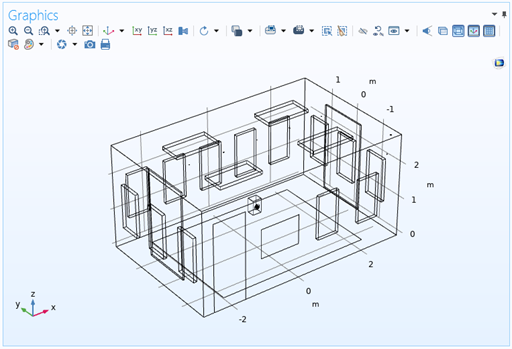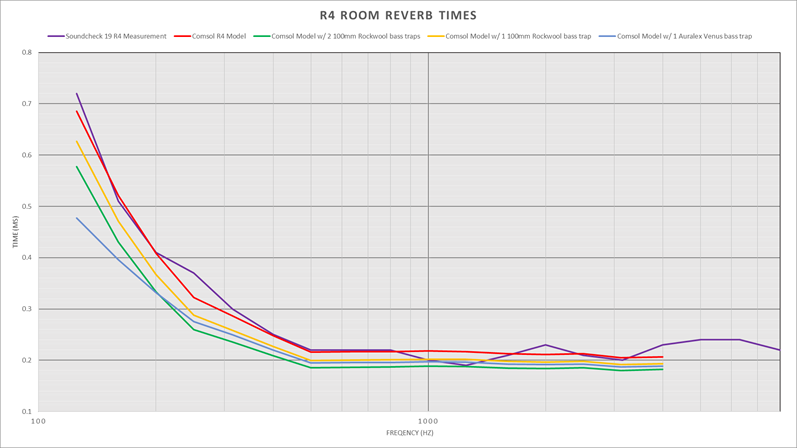Within Comsol Multiphysics is the ability to create room acoustics simulations. This can be extremely helpful in shaping the sonic picture of any space. For example, when designing a classroom, if the room is large and has a lot of reflective surfaces, a high reverberation time and low clarity can cause students sitting in the back to have trouble understanding the speaker. By using a simulation, you can test out many acoustic configurations of a room before anything is physically built, saving both time and money, and creating an auditory experience tailored to the needs of the space.
Users build out geometry of the room, adding in carpets, panels, and all other objects. Next, users define absorption coefficients of all materials across frequency bands and map them to different surfaces in the room. After this, the Sabine reverb equation can be calculated as a parametric sweep is simulated.
The room being designed in this case is a room-within-a-room. This will be useful for testing consumer devices in a setting that replicates actual use scenarios. After doing RT60 measurements in Soundcheck 19, it was decided corner bass traps would be a beneficial addition to the room. In Comsol, multiple different bass traps were simulated in different positions to determine best material, placement, and volume to reduce sound reflections in low frequencies with minimal impact in high frequencies.
By: Shannon McConnell
Users build out geometry of the room, adding in carpets, panels, and all other objects. Next, users define absorption coefficients of all materials across frequency bands and map them to different surfaces in the room. After this, the Sabine reverb equation can be calculated as a parametric sweep is simulated.
The room being designed in this case is a room-within-a-room. This will be useful for testing consumer devices in a setting that replicates actual use scenarios. After doing RT60 measurements in Soundcheck 19, it was decided corner bass traps would be a beneficial addition to the room. In Comsol, multiple different bass traps were simulated in different positions to determine best material, placement, and volume to reduce sound reflections in low frequencies with minimal impact in high frequencies.
By: Shannon McConnell




 RSS Feed
RSS Feed